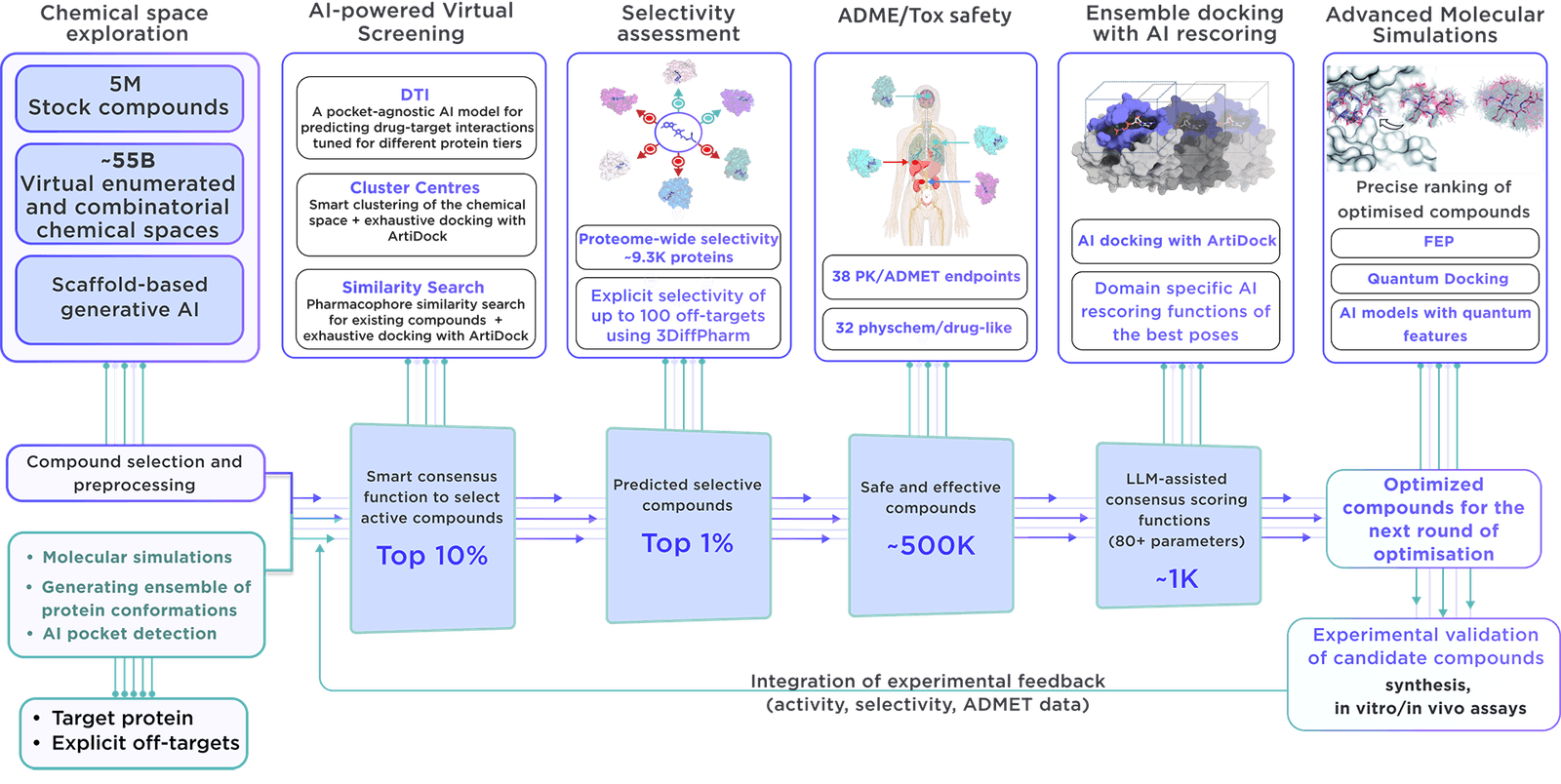Focused On-demand Libraries - Receptor.AI Collaboration
Explore the Potential with AI-Driven Innovation
This extensive focused library is tailor-made using the latest virtual screening and parameter assessment technology, operated by the Receptor.AI drug discovery platform. This technique is more effective than traditional methods, offering compounds with improved activity, selectivity, and safety.
We pick out particular compounds from an extensive virtual database of more than 60 billion molecules. The preparation and shipment of these compounds are facilitated by Reaxense.
Contained in the library are leading modulators, each labelled with 38 ADME-Tox and 32 physicochemical and drug-likeness qualities. In addition, each compound is illustrated with its optimal docking poses, affinity scores, and activity scores, giving a complete picture.
We use our state-of-the-art dedicated workflow for designing focused libraries for enzymes.
It includes in-depth molecular simulations of both the catalytic and allosteric binding pockets, with ensemble virtual screening focusing on their conformational flexibility. For modulators, the process includes considering the structural shifts due to reaction intermediates to boost activity and selectivity.
Our library is unique due to several crucial aspects:
- Receptor.AI compiles all relevant data on the target protein, such as past experimental results, literature findings, known ligands, and structural data, thereby enhancing the likelihood of focusing on the most significant compounds.
- By utilizing advanced molecular simulations, the platform is adept at locating potential binding sites, rendering the compounds in the focused library well-suited for unearthing allosteric inhibitors and binders for hidden pockets.
- The platform is supported by more than 50 highly specialized AI models, all of which have been rigorously tested and validated in diverse drug discovery and research programs. Its design emphasizes efficiency, reliability, and accuracy, crucial for producing focused libraries.
- Receptor.AI extends beyond just creating focused libraries; it offers a complete spectrum of services and solutions during the preclinical drug discovery phase, with a success-dependent pricing strategy that reduces risk and fosters shared success in the project.
Receptor.AI
O43505
UPID:
B4GA1_HUMAN
ALTERNATIVE NAMES:
I-beta-1,3-N-acetylglucosaminyltransferase; N-acetyllactosaminide beta-1,3-N-acetylglucosaminyltransferase; Poly-N-acetyllactosamine extension enzyme; UDP-GlcNAc:betaGal beta-1,3-N-acetylglucosaminyltransferase 1
ALTERNATIVE UPACC:
O43505; Q4TTN0

